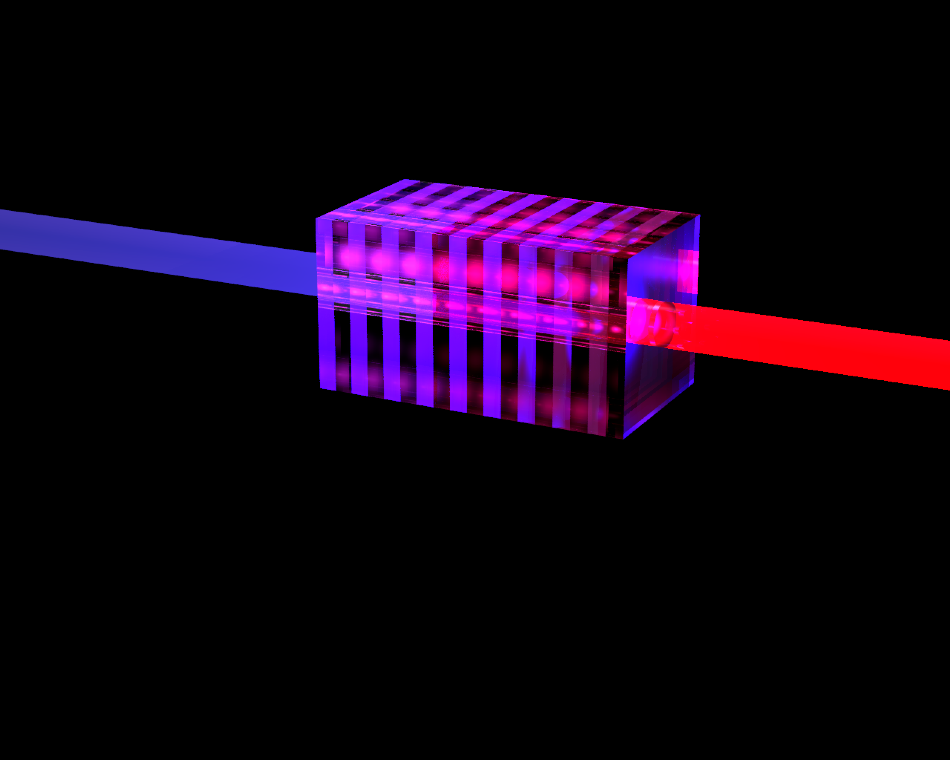Jun 24 2020
For quantum computers that can solve problems that cannot be solved by “classic” supercomputers, the number 50 is a critical number as at least 50 so-called “qubits” are required to prove “quantum supremacy.”
 Manipulating the crystal structure of the light source for getting better photons out of it. Image Credit: University of Twente.
Manipulating the crystal structure of the light source for getting better photons out of it. Image Credit: University of Twente.
Similarly, in the case of quantum computers that work with light, it is equally essential to possess at least 50 photons. Furthermore, it is vital that these photons are perfect; else, they will impair their own quantum capabilities.
However, this perfection is difficult to achieve. However, researchers from the University of Twente have shown that it can be achieved by proposed modifications to the crystal structure within existing light sources. The study outcomes have been reported in Physical Review A.
In the quantum realm, photons are promising with their interference, entanglement, and superposition. “Qubits” also possess these properties and help build a computer that functions completely different from performing calculations with ones and zeroes.
For several years, quantum computers have been predicted to solve highly complex problems, such as instant calculation of all vibrations within a complex molecule. The first proof of “quantum supremacy,” performed on highly complicated theoretical problems by using superconducting qubits, already exist.
Nearly 50 quantum building blocks are required to make the difference. This number is the same if photons are used in the place of qubits. The use of photons might offer benefits over qubits: they can function at room temperatures and exhibit more stability.
However, there is one vital precondition: it is crucial for the photons to be perfect to achieve the critical number of 50. In the new study, researchers from the University of Twente (UT) have now demonstrated that this is feasible.
Throwing Away Part of the Photon
However, what is a perfect photon? The light source for photons might be lossy, and thus, a “promised” photon may not emerge. Also, a photon can even be lost—and thus the outcomes—moving via a set of light-conducting channels for quantum calculations.
But the main reason for imperfection is that the light source generates photons that are somewhat different, while they should be ideally the same. Visualize a photon pair emerging out of the light source, where one is red and the other is slightly more orange.
They have a lot in common, but not so much though. A filter can be used to render them both red. However, part of the photon will be lost, thereby rendering quantum calculations impossible as the imperfections stay coupled. Alternatively, even when the system can handle certain imperfection, the number of 50 is never achieved—which leads to loss of supremacy.
Crystal Domains
To achieve this, the team resorted to going to basics—to the light source to find out whether there is scope for improvement. They endeavored to enhance the crystal structure of the light source. It is feasible to accurately bestow the desired properties to light by “playing” with the desired orientation in the crystals, and by splitting them into different domains.
In the past few years, scientists have been working on specified domains. However, it is crucial to vary the domains to better customize the properties of light. In several labs across the globe, research is ongoing on this method to manipulate light. The new study offers a new means to improve the crystal, more closer toward perfect photons.
The study has been performed in the Complex Photonic Systems group, part of UT’s MESA+ Institute and the new Centre for Quantum Nanotechnology Twente (QUANT). The research was performed jointly with collaborators from the Integrated Quantum Optics group at the University of Paderborn.
Journal Reference:
Van der Meer, R., et al. (2020) Optimizing spontaneous parametric down-conversion sources for boson sampling. Physical Review A. doi.org/10.1103/PhysRevA.101.063821.